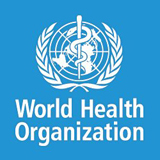
Preventing maternal deaths
- WHO leadership on maternal death surveillance and response (MDSR)
- Two pivotal documents updated: PCPNC, and the Counselling Handbook
- Intensified attention to midwifery services and quality of care
- Promotion of innovative ways to increase and measure the quality of perinatal care in health facilities
- Mapping training resource packages for community health workers
Preventing newborn deaths
- Leading the consultation process to develop the Every Newborn Action Plan
- Estimating causes of death
- Defining priorities for research on newborn health for 2013-2025
- Conclusions of MCA-supported research
– Home visits for newborns save lives
– Treatment of possible serious bacterial infections in newborns is feasible on an outpatient basis
– New evidence is available on the effect of Vitamin A supplementation on infant survival
This report presents highlights of the work accomplished by the WHO Department of Maternal, Newborn, Child and Adolescent Health (MCA) in 2012 and 2013. The scope and mandate of the work of the Department are broad. Through research, MCA generates new evidence to shape norms, standards and guidelines that serve to guide countries in adopting the most effective, evidence-based policies and strategies. It supports building capacity for moving towards universal access to high-quality, integrated health services, and supports the measurement of progress. Much of this work has been carried in collaboration between WHO headquarters, regional and country offices, with other departments of WHO and with partners. The environment in which MCA works is dynamic, and progress is evident in all population groups. The global maternal mortality ratio fell by 47% between 1990 and 2010, and the under-five mortality rate decreased by 47% between 1990 and 2012. However, this progress is not sufficient, and achieving Millennium Development Goals (MDGs) 4 and 5 is still not ensured. In 2012, 6.6 million children died before their fifth birthday. Of these, nearly three million were newborns in their first month of life. 287 000 women died due to complications of pregnancy and childbirth, and the annual 2.6 million stillbirths remain silent tragedies. The health of adolescents has attracted increased attention. First, there are many of them – often more than 20% of the population, with the proportion highest in low and middle-income countries. Second, there is a growing recognition that the health problems and health-related behaviours that arise during adolescence have important implications for adult health, and for public health in general.
Multiple global efforts are under way to accelerate progress towards reducing maternal and child mortality and improving survival. The UN Secretary-General’s Global Strategy for Women’s and Children’s Health, launched in 2010, is an unprecedented endeavour to save the lives of 16 million women and children by 2015. More recently, a number of initiatives have been initiated with aims of accelerating progress towards MDGs 4 and 5, and of ending preventable maternal and child mortality within one generation. The Child Survival Call to Action: A Promise Renewed sets out targets for reducing child mortality to 20 child deaths or less per 1000 live births by 2035. In support of this target, the integrated Global Action Plan for the Prevention and Control of Pneumonia and Diarrhoea provides directions for ending preventable child deaths due to these two diseases. Similarly, “Every Newborn: an action plan to end preventable deaths” is in development to increase attention to this age group. Finally, the Family Planning Summit in 2012 set an ambitious goal to provide an additional 120 million women, in the world’s poorest countries, with access to voluntary family planning by 2020.